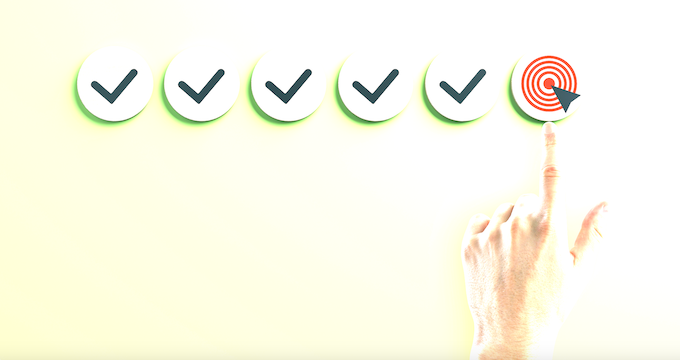This is the fourth in a series of posts on AARE’s education priorities for the 2025 federal election. Today’s posts are about boosting the teacher workforce. This post develops some of the themes we published earlier today on boosting the teacher workforce.
It is expensive to become a school teacher – for the individual and for government. It is a great calling, but why do relatively few stay for the longer term? There is no simple answer, and both researchers and policymakers must avoid the temptation of simple solutions. One touted solution is to reduce the burden on teachers by removing all the non-class duties that have built up over the years. This ‘busy work’ does create workload pressures and is cited as a reason teachers leave the profession.
Yet an important part of non-class time is researching and planning for time spent with students. This has always been part of teaching. Unfortunately, this work is often labelled ‘busy work’ alongside administration and compliance tasks. In accordance with this labelling, generative AI and pre-produced curriculum resources are increasingly harnessed to replace teachers’ own research and planning.
Teachers are ethically bound to adjust resources
These are ‘solutions’ that must be closely scrutinised, for teachers value research and planning. Research shows teachers feel obliged to make modifications because they know their students and are ethically bound to adjust resources to suit them. So, even if resources are purchased to save teachers’ time, teachers have to devote time anyway to ensure materials meet the needs of their students. This kind of assistance may not be the panacea to teacher workload that it is imagined to be.
AI-generated and off-the-shelf resources are never able to anticipate the diverse needs of real students. Teachers know they have to use their professional discretion to fine-tune even the best of supplied resources. The understanding of students’ needs that guides curriculum adjustment is built on rapport with students. This social-emotional work is vital to teachers’ (and students’) wellbeing. It is undermined when teachers are made to use resources without scope for interpretation.
Teachers’ interpretive work with curriculum and resources is highly skilled and intensely difficult. The interpretive process not only calls for fine-grained attunement to students’ needs, but the curriculum and resources always need to be related back to broader knowledge and skills. For instance, maths curriculum is a sort of shorthand for certain mathematical skills and knowledge. Teachers have to unpack the knowledge and skills implicit in curriculum and resources to make learning come to life. This creative work taps into teachers’ own interests and expertise and is one of the sources of joy in planning.
Teachers’ interpretive work is nearly invisible to the casual observer
Teachers’ interpretive work (to serve diverse students, and to unpack knowledge and skills) is nearly invisible to the casual observer. However, it is critical to ensuring official curriculum is converted to quality learning. Early evidence suggests that standardising curriculum resources – that is, to replace this work with off-the-shelf resources – increases the dissatisfaction of teachers. Teachers need to interpret curriculum rather than recite it. They deeply value the work of lesson planning and preparation in their roles. Maybe it is the invisibility of this work that prompts people outside education to undervalue it?
To help education ministers and bureaucrats in their well-intentioned efforts to improve the lives of teachers and make the profession more attractive, researchers need to clarify the professional need to interpret and plan for quality learning. We need research that can explain the links between planning and performing in classrooms, and how teachers’ work satisfaction is implicated.
We also need policy makers who are capable of a nuanced response to the needs of teachers, who are open to the complexities of teachers’ work and with that, wary of simple solutions.

Steven Hodge is director of the Griffith Institute for Educational Research (GIER). His research focuses on the relationship between curriculum development and the work of educators. Emily Ross is deputy director of Teaching and Learning and Director of Primary Programs in the School of Education at The University of Queensland. Emily’s curriculum interpretation and implementation research has shaped government policy in Queensland and Australia






Why do teachers constantly reinvent the wheel. More of our time should be spent on determine education needs and administering resources that have already been developed. I’m not aware of Doctors producing pills for patients. There should be more high quality resources developed for teacher administration.. if student variability is as great as we are led to believe, why are class sizes not reduced to match this need. If I teach all lower secondary classes I can have 250 different students per semester.
Thanks for engaging, Chris. Your observations made us think! Reinventing the wheel would certainly be an absurd and wasteful occupation. Yet when we look around we see many kinds of wheel. They all reflect the same essential plan, but on closer inspection, they differ according to vehicle, budget, terrain, wear, etc. We suggest teachers are not so much reinventing wheels, but taking care to ensure that subject matter (the circular principle) is ‘fitted out’ to suit the demands of diverse learning situations (different terrains). The note about doctors and pills is also helpful. Yes, it would be concerning to learn modern doctors concoct pills, but we would expect them to adjust dose and form of delivery to suit the needs of individual patients. This is analogous to teachers’ curriculum work – taking pre-given curriculum and resources, and making adjustments that take into account (in myriad ways) the differences among individuals and groups of students.
Good points